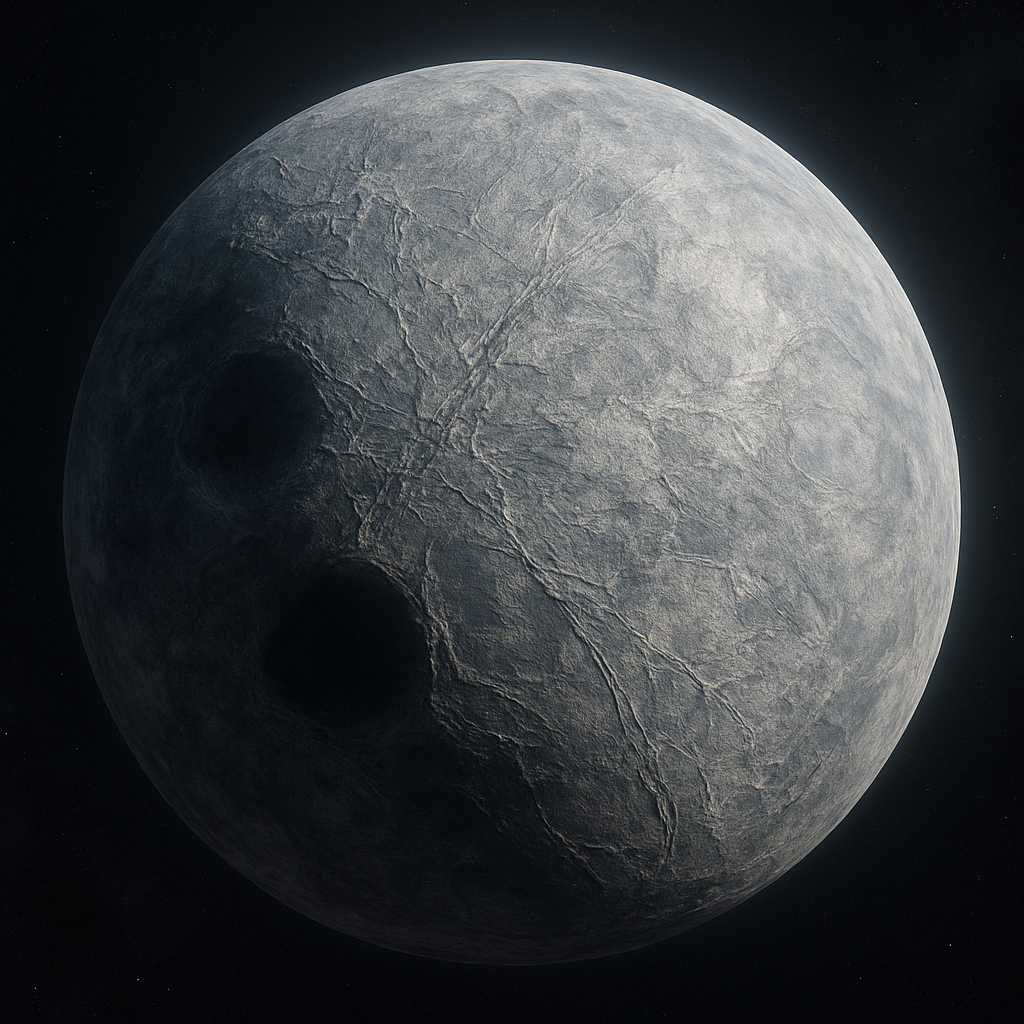Zheth
Zheth
Astrographical Information
Galaxy
Milky Way
Galactic ArmOrion
SystemCraehlil System
OrbitingCraehlil
Orbital positionFifth Planet
Orbital Distance4.21 AUs (630,833,055 km)
Orbital characteristics
Aphelion 4.32 AU (647,493,230 km)
Perihelion 4.10 AU (614,172,880 km)
Semi-major axis 4.21 AU (630,833,055 km)
Eccentricity 0.073
Orbital period (sidereal) 2,964.7 days
Average orbital speed 13.9 km/s
Mean anomaly 236.5°
Inclination- 1.8° – Craehlil's equator;
- 0.9° – invariable plane;
- 2.4° – J2000 ecliptic
Longitude of ascending node 143.6°
Time of perihelion 412.5 days
Argument of perihelion 91.7°
Moon(s) 3
Physical Information
Diameter 10,992 km (6,832.7 mi)
Mean radius 5,496 km (3,416.4 mi)
Equatorial radius 5,509 km (3,424.5 mi)
Polar radius 5,485 km (3,408.2 mi)
Flattening 0.0044
Circumference- 34,600 km; equatorial
- 34,448 km; meridional
- Land: 100% exposed crustal metal
- Water: 0% (no known hydrosphere)
Volume 6.933 × 10¹¹ km³
Mass 5.41 × 10²⁴ kg
Mean density 7.11 g/cm³
Surface Gravity 13.5 m/s²
Moment of inertia factor 0.310
Escape velocity 13.1 km/s
Synodic rotation period 57.8 Hours
Sidereal rotation period 54.9 Hours
Equatorial rotation velocity 298.2 m/s
Axial tilt 7.6°
Axial Precession 32,100 years (minor due to lack of atmospheric drag)
Albedo- 0.42 geometric
- 0.31 Bond
Temperature 36–211 K
Surface Temperature- -237°C (-395°F) Min
- -185°C (-301°F) Mean
- -62°C (-79.6°F) Max
Surface absorbed dose rate 0.8 μGy/h
Surface equivalent dose rate 1.1 μSv/h
Apparent magnitude +2.2" to +6.1"
Absolute magnitude (H) 6.91
Atmosphere
Surface pressure
0.004 kPa; ~0 atm (trace residual gas)
Composition by volume- 82.1% Argon
- 7.6% Neon
- 4.3% Methane (ice-trapped release events)
- 3.5% Helium
- 2.0% Volatile residues (metallo-organic offgassing, industrial byproducts)
- 0.5% Xenon and trace gases (residuals from prior orbital industry)




Comments